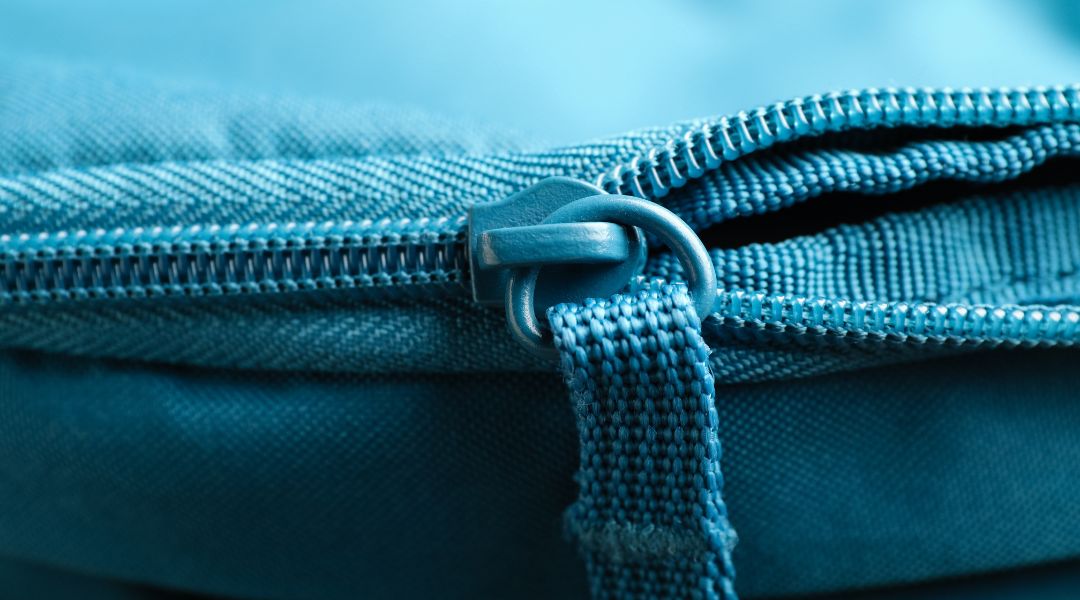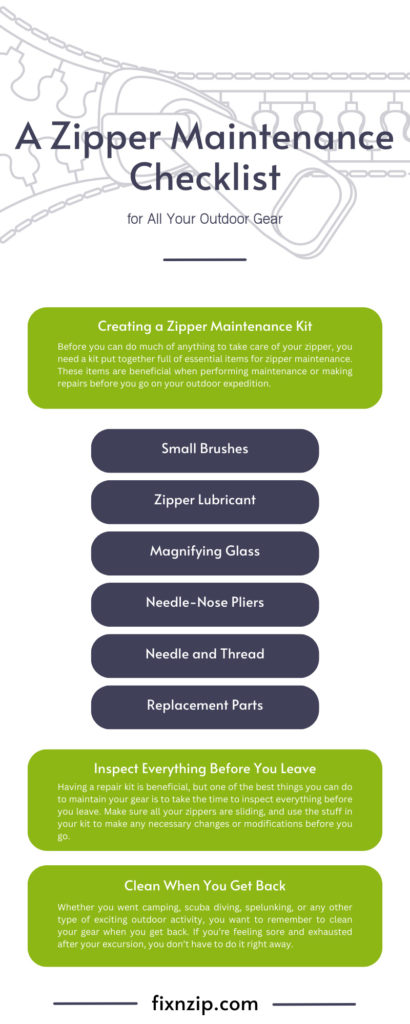
If you take care of your gear, it will take care of you. Whenever you engage in any sort of outdoor activity, you want to make sure that everything you need is in good working order. Heading out with faulty equipment is a surefire way to find yourself up a creek, which is never a good thing—even if you’re going on a kayaking trip.
If you’re camping and discover the zipper on your tent has corroded, or if you’re scuba diving and calcification is preventing you from unzipping your wetsuit, it can be frustrating. So before you head out, we recommend going over this zipper maintenance checklist for all your outdoor gear. This will ensure you’ve taken all the necessary steps and have all the proper gear to take care of your zippers.
Before you can do much of anything to take care of your zipper, you need a kit put together full of essential items for zipper maintenance. These items are beneficial when performing maintenance or making repairs before you go on your outdoor expedition.
Fortunately, many of these are items you can find at your local craft or hardware store. Having a well-stocked kit makes things easier for you in the long run, so once you have it put together, it may surprise you how easy regular maintenance becomes.
One of the main causes of zipper problems is granular bits and pieces like dirt or dust getting stuck in the track of the zipper, making it difficult to move. For example, wetsuits and other gear that spends a lot of time near the water often suffer from salt buildup that can make it difficult to use the zipper.
Having one or more small brushes allows you to get into the zipper track and gently clean stuff out. To remove these tiny problems, we recommend using a soft-bristled brush so that you don’t scratch up the metal. You can use specialized brushes designed for cleaning or a traditional toothbrush. Also, consider bringing along a few different sizes of brushes, depending on what type of gear you have.
If you ever find yourself dealing with a stuck zipper, you know you need to get it moving again. However, tugging or yanking on the zipper is never a good idea, since it can cause your zipper to bend or the tape to rip or tear.
Instead, use a zipper lubricant. Most zipper lubricants are either a spray in a small bottle that you can spritz around the slider or something like a lip balm that you can apply directly. Depending on your equipment, it may be a good idea to have some variety in your kit so that you’re always prepared.
A lot of gear may have fairly small zippers, so it’s not always easy to get the best view of what the problem might be. Having a magnifying glass in your repair kit allows you to get a closer look and figure out where you need to make some adjustments.
A good pair of needle-nose pliers should be on every zipper maintenance checklist for your outdoor gear. The thin head of the pliers allows you to grip and adjust small pieces tightly. For example, if the teeth of your zipper become bent, you may be able to realign them with some pliers. You can also use pliers to remove and replace top stops or bottom stops.
If you know how to sew, keeping a needle and a few colors of thread in your kit is a good idea. This is because there are times when you may need to replace a zipper. Or if the tape gets ripped, you can sew it back together. Having a steady hand and some high-quality thread makes these repairs a breeze.
Sometimes, everything about your zipper may be in good shape except the slider. Having a zipper slider replacement to match the gear you’re bringing allows you to get things working again if you run into any problems before or during your trip.
A microfiber cloth is a soft piece of material that’s perfect for cleaning around your zipper. If you use lubrication or if your gear gets wet or sticky, cleaning with a microfiber cloth wipes away the gunk without scratching up the zipper.
If you ever see a loose thread, you generally don’t want to pull on it, since that can make things worse. However, that thread may get caught on something, leading to further damage. Generally, the best solution for a loose thread is to take a small pair of scissors and snip it off.
Having a repair kit is beneficial, but one of the best things you can do to maintain your gear is to take the time to inspect everything before you leave. Make sure all your zippers are sliding, and use the stuff in your kit to make any necessary changes or modifications before you go.
When you make it a point on your checklist to examine everything carefully before you leave, you’re less likely to run into problems once you’re out there. This allows you to focus more on having a good time.
Whether you went camping, scuba diving, spelunking, or any other type of exciting outdoor activity, you want to remember to clean your gear when you get back. If you’re feeling sore and exhausted after your excursion, you don’t have to do it right away. However, we recommend brushing and lubricating the zippers on your gear before you put them back into storage.
To learn more about proper zipper maintenance and to order some beneficial zipper replacement parts, FixnZip is here for you. We have several articles on repairs and want to make sure you’re securely fastened on all your expeditions. If you have any additional questions, don’t hesitate to reach out to a member of our team who will be happy to assist you.

